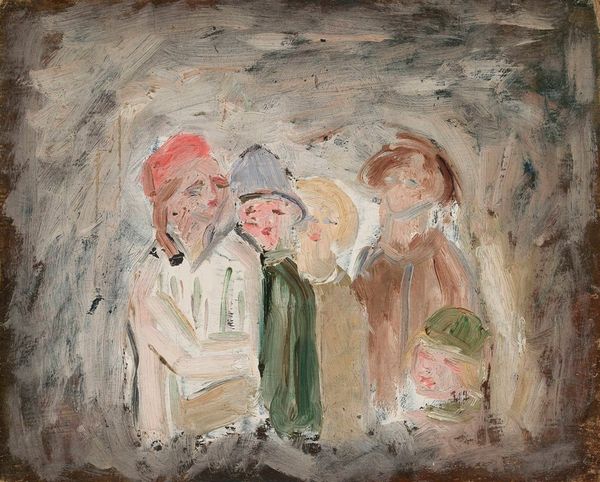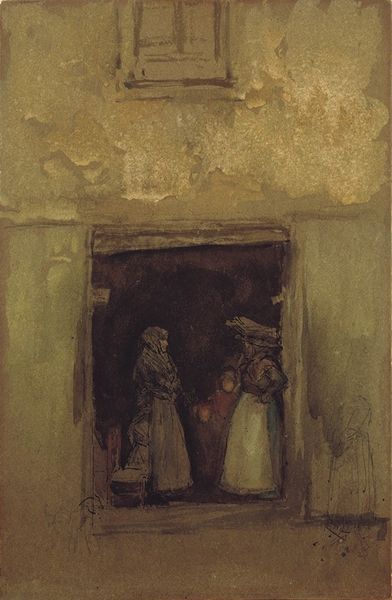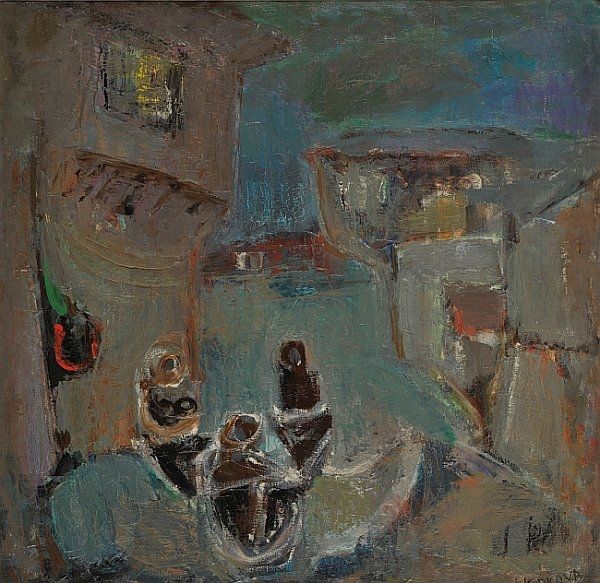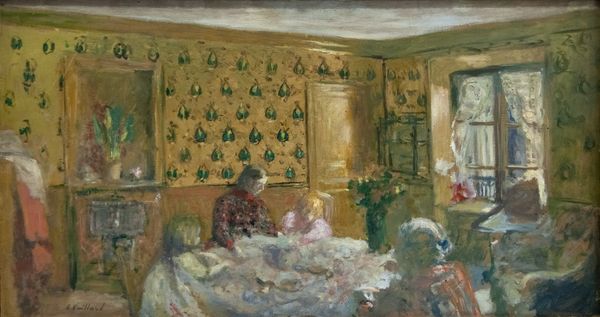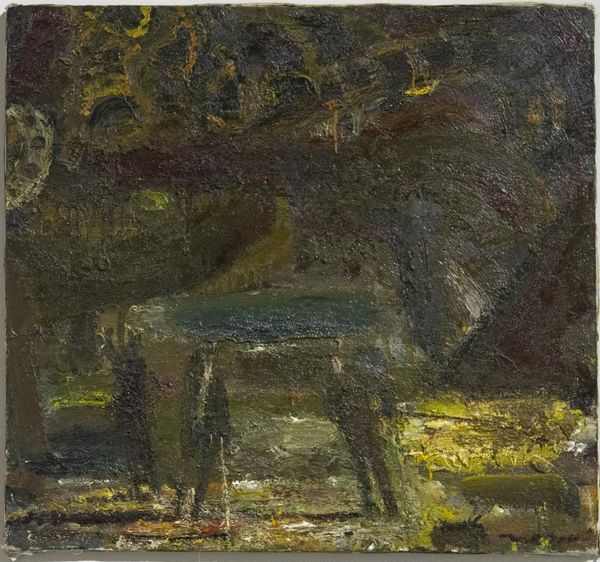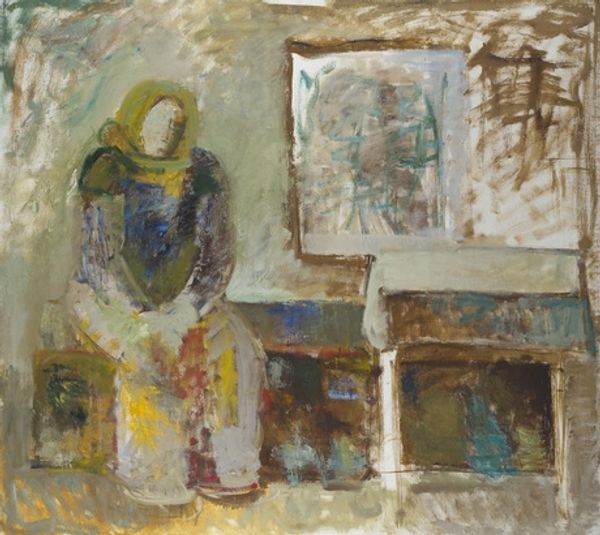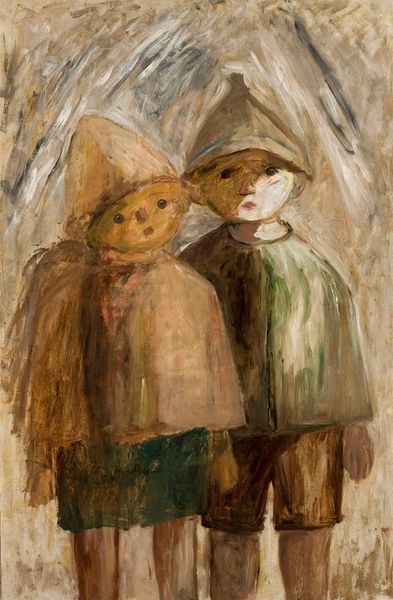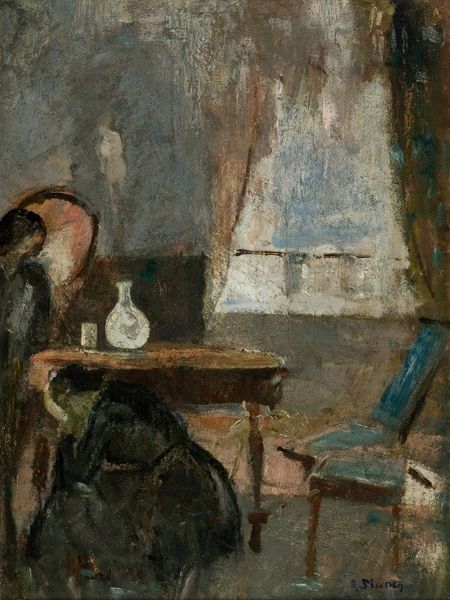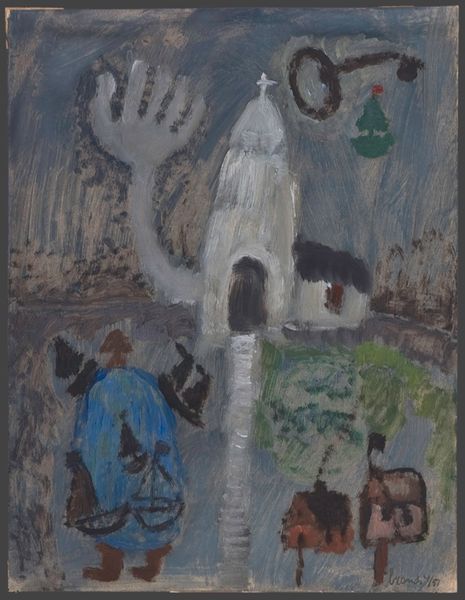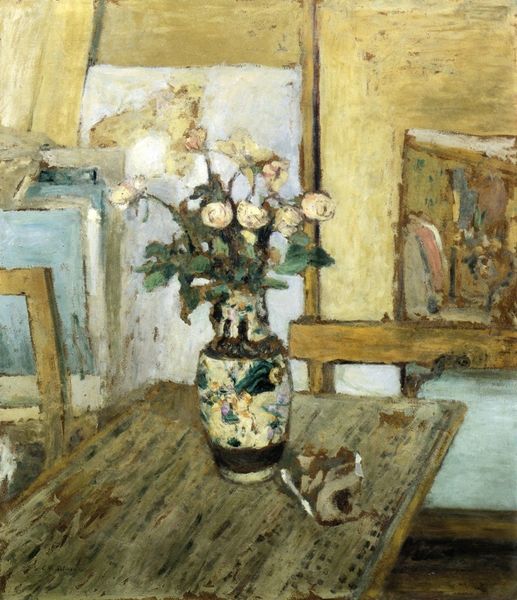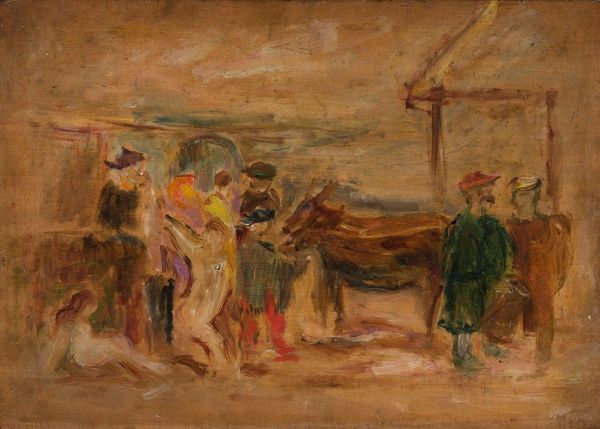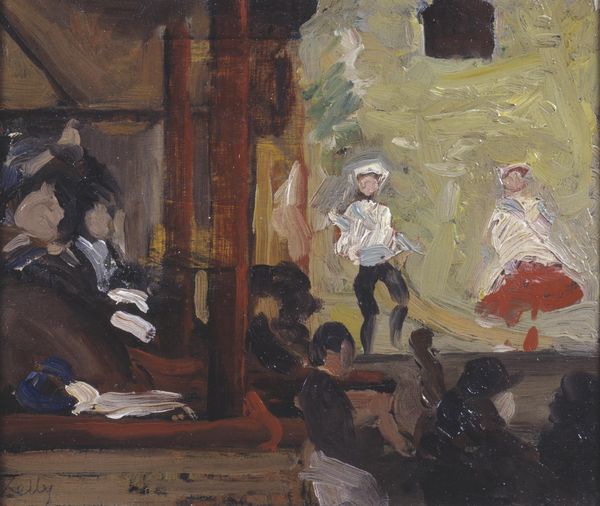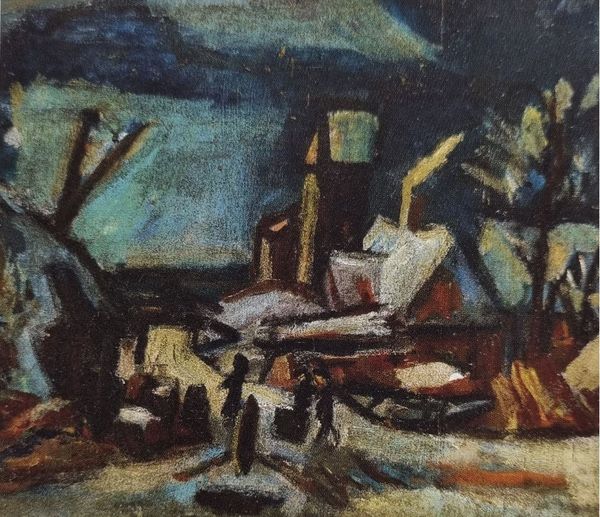
Copyright: Public Domain: Artvee
Curator: Tadeusz Makowski's "Przy stole," painted in 1919, presents an intimate, albeit obscured, scene. Editor: It’s quite somber. The muted palette—earthy browns and grays—evokes a feeling of hushed stillness, almost like peering into a faded memory. Curator: Indeed. Makowski's application of oil paint, so deliberately visible and heavily textured, builds form, creating distinct masses and subtly fractured planes. How do you perceive the labor evident in the execution? Editor: I immediately wonder about the artist's socioeconomic conditions and artistic circle at the time. Were these readily available materials? Was the textured approach chosen for artistic or budgetary considerations? I see a rawness, almost like raw clay shaped hastily into existence. It rejects the slickness of more bourgeois artwork of its time. Curator: The forms themselves certainly deconstruct representational space. Consider how the geometric architecture contrasts with figuration, which undermines perspective in favour of planar arrangement. Editor: Yet within this geometric fracturing, there is a tender acknowledgment of a human context. What story could they tell? I find it interesting to think of these works being created not for display but simply for sale to bring resources to the maker. Curator: A compelling tension exists between his manipulation of material and compositional intent. Makowski clearly wrestles with visual representation versus structural expression. This echoes broader early twentieth-century investigations into objective reality. Editor: Perhaps Makowski consciously elevated craft techniques from commercial practices into art proper, as means of artistic emancipation. Curator: Ultimately, this painterly scene challenges traditional viewing habits, pressing viewers to confront the raw construction that begets even seemingly simple observations of daily life. Editor: I am moved by the suggestion that each dab of paint applied during its making represents the hand of the creator and connects the artwork intrinsically to labor and the socio-economic factors underpinning production and artistic skill.
Comments
No comments
Be the first to comment and join the conversation on the ultimate creative platform.
